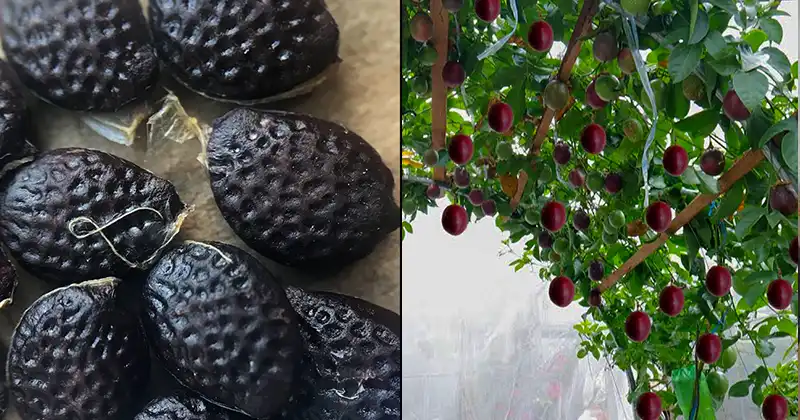Passion fruit, with its unique flavor and health benefits, is a tropical fruit loved by many. However, not everyone has the luxury of a garden to cultivate these delicious vines. If you’re part of a family without a garden but still want to enjoy the pleasures of homegrown passion fruit, you’re in luck! This article will guide you through the process of growing passion fruit in containers from seeds, bringing this exotic treat to your home, no matter how limited your outdoor space may be.
Materials You’ll Need
Before we get started, gather the following materials:
- Passion Fruit Seeds: You can obtain these from a mature passion fruit. Save the seeds and let them dry for a day or two.
- Container: Choose a large pot or container, at least 18 inches in diameter and 18 inches deep. It should have drainage holes to prevent waterlogging.
- Quality Potting Mix: Use a well-draining potting mix rich in organic matter.
- Trellis or Support: Passion fruit vines are climbers, so you’ll need a trellis or some form of support for the plant to grow on.
- Fertilizer: A balanced, slow-release fertilizer will help nourish your passion fruit plant.
- Watering Can or Hose: To ensure your plant receives adequate moisture.
- Pruning Shears: For trimming the plant as it grows.
- Sunlight: Find a sunny spot, like a balcony or windowsill, that receives at least 6-8 hours of sunlight per day.
Steps to Growing Passion Fruit in Containers
- Prepare the Container:
- Fill the container with well-draining potting mix, leaving a couple of inches from the top.
- Plant the Seeds:
- Plant 2-3 passion fruit seeds about 1 inch deep in the center of the container. Water the soil lightly.
- Provide Support:
- Install a trellis or any suitable support system in the pot, ensuring it’s stable and tall enough for the passion fruit vine to climb.
- Watering:
- Keep the soil consistently moist but not waterlogged. Water when the top inch of soil feels dry, and ensure that excess water drains away through the container’s holes.
- Sunlight:
- Place the container in a sunny location where your passion fruit plant can receive direct sunlight for several hours each day.
- Fertilizing:
- Once your passion fruit plant begins to grow and develop its first set of true leaves, start fertilizing it with a balanced, slow-release fertilizer according to the package instructions. Repeat every 4-6 weeks during the growing season (spring to fall).
- Pruning:
- As the plant grows, it may produce multiple shoots. Select the strongest shoot and trim the others to encourage vertical growth. Additionally, prune any damaged or dead growth as needed.
- Patience and Pollination:
- Passion fruit plants may take several months to a year to start flowering and fruiting. If you want to ensure pollination, you can use a small paintbrush to transfer pollen between the flowers when they bloom.
- Harvesting:
- Harvest the passion fruit when they turn purple or yellow, depending on the variety. They should come off easily when you twist and pull them from the vine.
Conclusion
Growing passion fruit in containers is not only possible but also rewarding for families without gardens. By following these steps and providing the right care, you can enjoy the sweet, tropical flavors of your homegrown passion fruit in no time. Share the joy with your family and savor the delicious fruits of your efforts, even if you lack garden space. Happy gardening!
